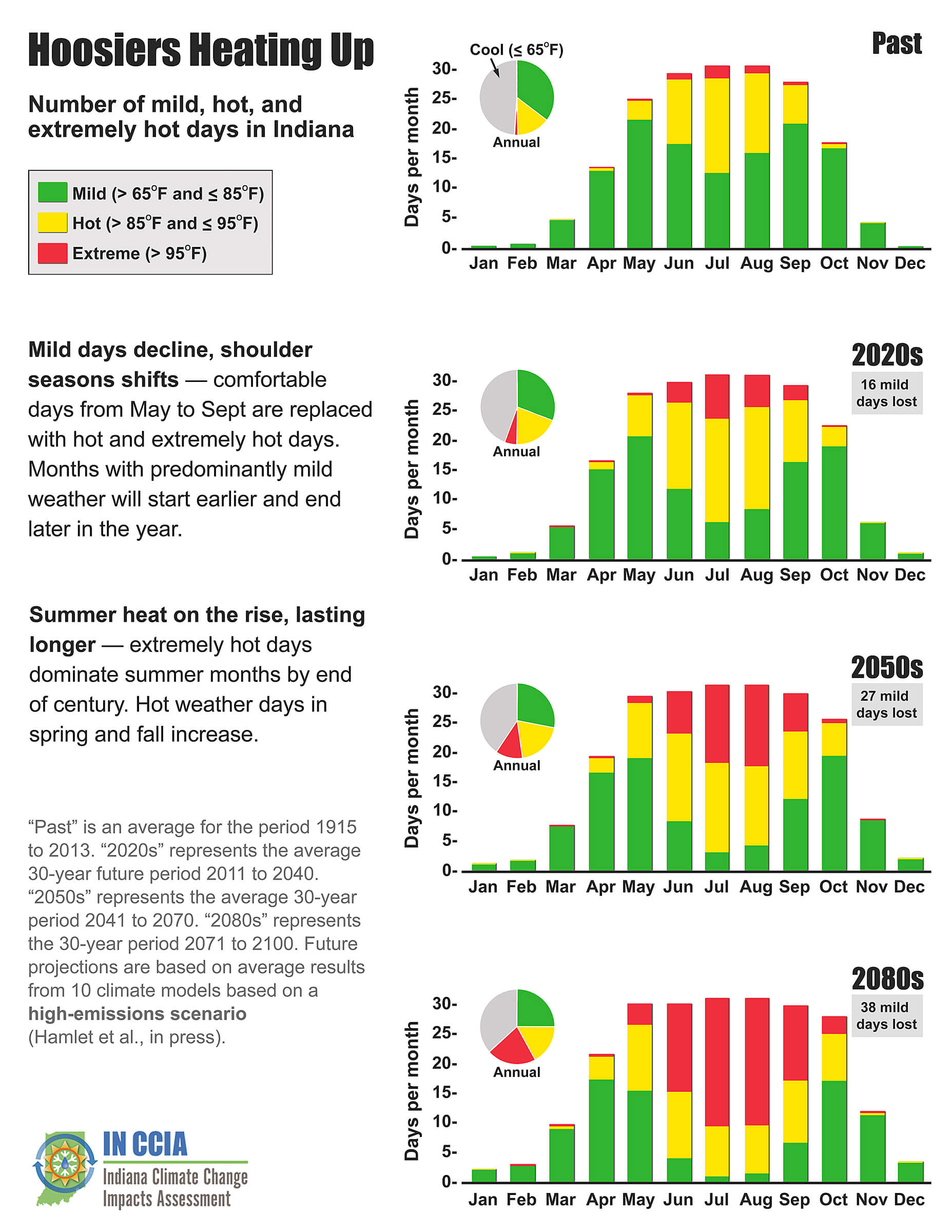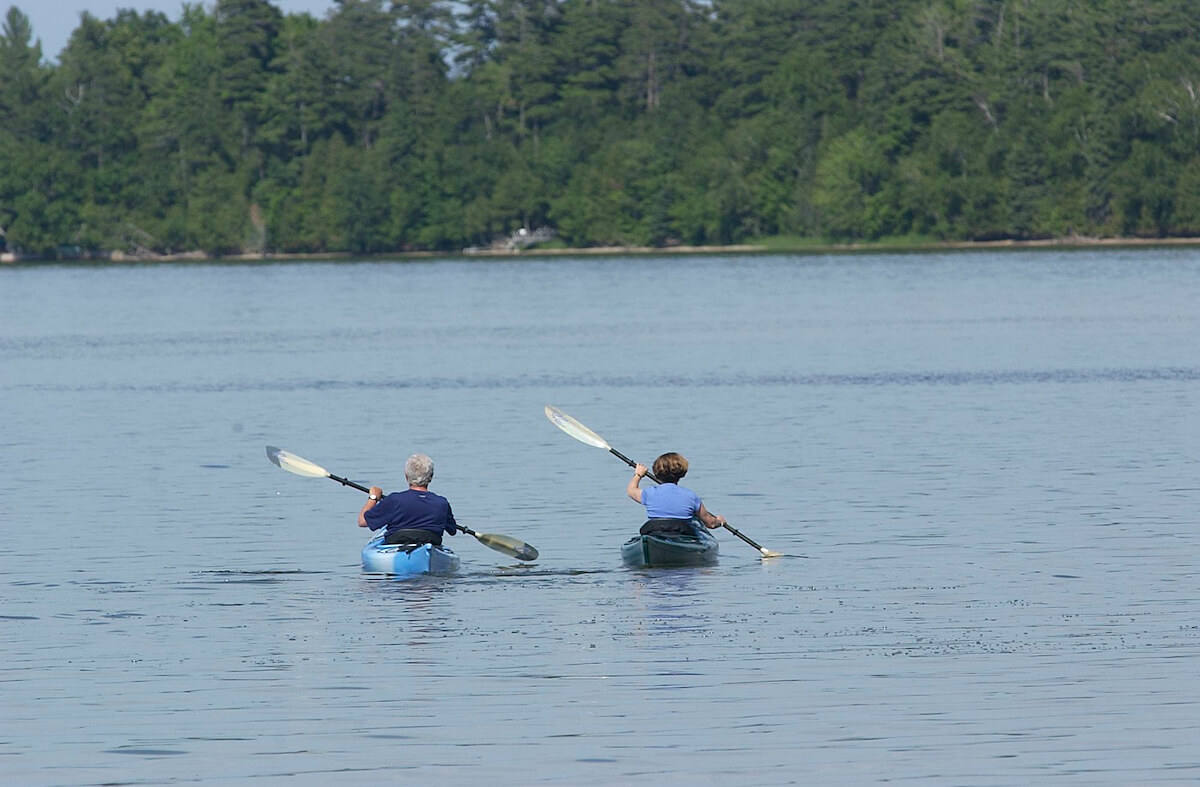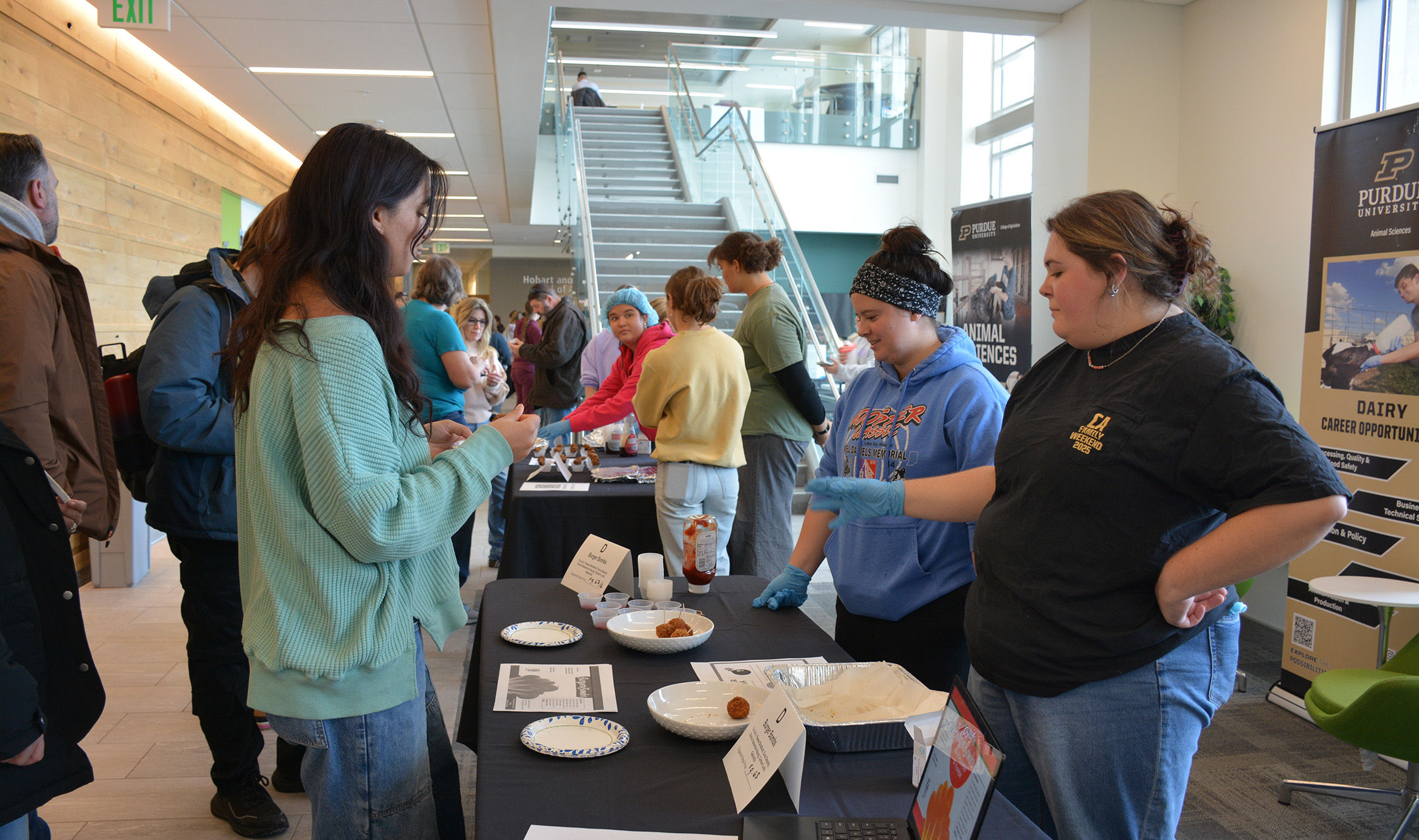Longer, hotter summers to challenge Indiana tourism business
By 2050, a month of the best weather for attracting summer tourists to Indiana will be replaced by hotter days that will be too uncomfortable for outdoor activity. Warmer temperatures will also limit many popular winter activities.
That prediction is according to the latest Indiana Climate Change Impacts Assessment report, “Tourism and Recreation in a Warmer Indiana,” released Monday (Nov. 12). The Purdue Climate Change Research Center coordinates the IN CCIA, which includes researchers from dozens of Indiana universities and stakeholder groups.
Changes will challenge Indiana businesses that rely on tourism and recreation dollars. In 2016, 79 million tourists visited Indiana, adding $12.2 billion to the economy and supporting more than 240,000 jobs, according to the Indiana Office of Tourism Development. Indiana is a destination for outdoor activities, from Lake Michigan and the Indiana Dunes in the north, to cultural, culinary and sports draws in Indianapolis, to rolling hills and peak fall color down south.
“The bottom line is that businesses and organizations in Indiana need to think about whether their operations are well-tuned to the climate we’re experiencing now and the climate that we’ll experience in the future,” said Jeff Dukes, director of the Purdue Climate Change Research Center. “We already have a different climate than we’ve had in previous years, and business owners need to be nimble and ready to adjust to the changes we’re experiencing.”
Indiana historically has 129 days per year in which the high temperature is between 65-85 degrees F. These so-called “mild days” are considered ideal for outdoor activities.
Rising temperatures could replace as many as 27 of these days per year with uncomfortable and dangerous heat by the 2050s and 38 by the end of the century. Historically, the state has about 52 hot days per year, in which the highs reach 85-95 degrees F. By mid-century, the state is projected to have 72 of these days per year.
Extremely hot days, in which highs above 95 degrees F may limit the amount of time a person can safely be outdoors, will also increase throughout the state. Indiana traditionally experiences five of these days per year but could see as many as 42 by the 2050s.
“Mild weather is the sweet spot for outdoor activities, but once you get above that, being outdoors becomes less appealing. And by the time you get to the 90s and you have a lot of humidity, being outside is even less attractive,” said Jonathon Day, Purdue associate professor of hospitality and tourism management and lead author for the report. “That means that people who provide outdoor services will need to adapt to these temperatures and invest in things like shade and cooling, much like some of the much hotter locations we see around the country today.”
Warmer temperatures will shorten the coldest part of winter by 20-25 days by mid-century, leading to mild days starting earlier in the spring and lasting later into the fall. These extended “shoulder seasons” could lengthen the tourism season and increase profits for some businesses.
“There may be certain periods at the beginning or end of the summer when our state becomes much more attractive to people from the south,” Dukes said.
But businesses will have to plan to take advantage. For example, many water-related attractions rely on high school students to fill summer jobs. Those employees may not be available before Memorial Day or after Labor Day, traditionally when those businesses operate.
Higher winter temperatures will also limit the amount of snow and ice cover necessary for activities such as skiing, snowshoeing, ice fishing and skating. By mid-century, Indiana’s winters are expected to warm as much as 6 degrees F, reducing snow cover by 32-41 percent.
“People here like to go ice fishing, snowmobiling - all of this is going to become less easy to do in the future,” Day said.
More snow falling as rain, as well as increased precipitation expected in the spring, may lead to flooding concerns. More nutrients washing from farm fields into nearby water may increase algal blooms and decrease the safety and desirability of some lakes and rivers. Standing water will boost mosquito populations and increase the risk of the insects transmitting diseases such as West Nile virus.
Day said businesses, organizations and governments need to consider these when planning for tourism in the future.
“Companies, destinations and communities need to be aware that the changes are coming and be adaptive to them. We need to build our resilience, be prepared for floods or storms or periods of heat waves,” Day said. “These effects are going to be hard to predict year by year, but we know that tourism is going to be impacted directly – and indirectly – by climate change. We need to be aware and prepared”
A video highlighting key findings of the report can be found at: https://youtu.be/k56uL8DX2zY
The Indiana Climate Change Impacts Assessment (IN CCIA) is compiling the latest scientific research into a series of easily understandable reports about climate change impacts in 10 topic areas: climate, health, forest ecosystems, aquatic ecosystems, urban green infrastructure, tourism and recreation, agriculture, water resources, energy, and infrastructure. The assessment team consists of more than 100 experts from Purdue and other Indiana institutions.
The IN CCIA has now released seven reports. All are available on the IN CCIA website at http://indianaclimate.org/. For more information about the IN CCIA, go to the website or follow on social media at @PurdueCCRC, #ClimateChange, #INCCIA.







